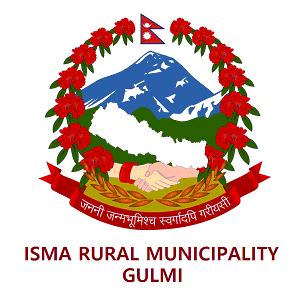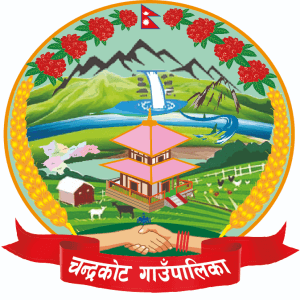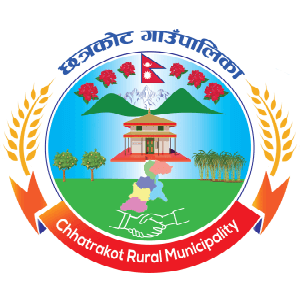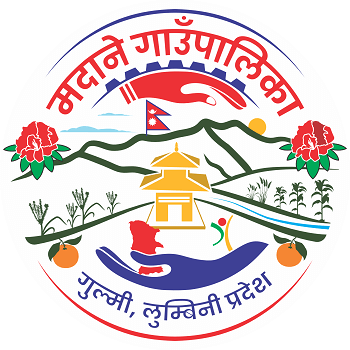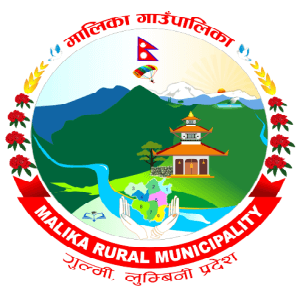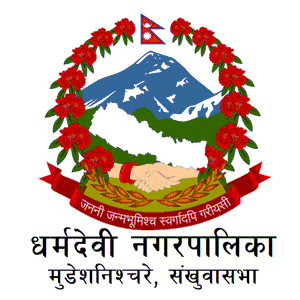Overview
Kaligandaki Rural Municipality (Kaligandaki Gaunpalika Gulmi), situated in the Lumbini Province of Nepal, is a hidden gem that offers visitors an abundance of natural and cultural resources. Spanning an area of 101.04 square kilometers, this rural municipality is situated in the eastern part of the Gulmi district, bordered by Baglung to the north, Parbat to the east, Syangja to the south, and Chandrakot in the Gulmi district to the west.
With a population of 18,876 people, comprising 8,275 men and 10,601 women, Kaligandaki is divided into 7 wards, with Purtighat designated as the administrative center of the rural municipality. The historical Kaligandaki River flows through the region, and the rural municipality is filled with beautiful tourist spots that have the potential for tourism development.
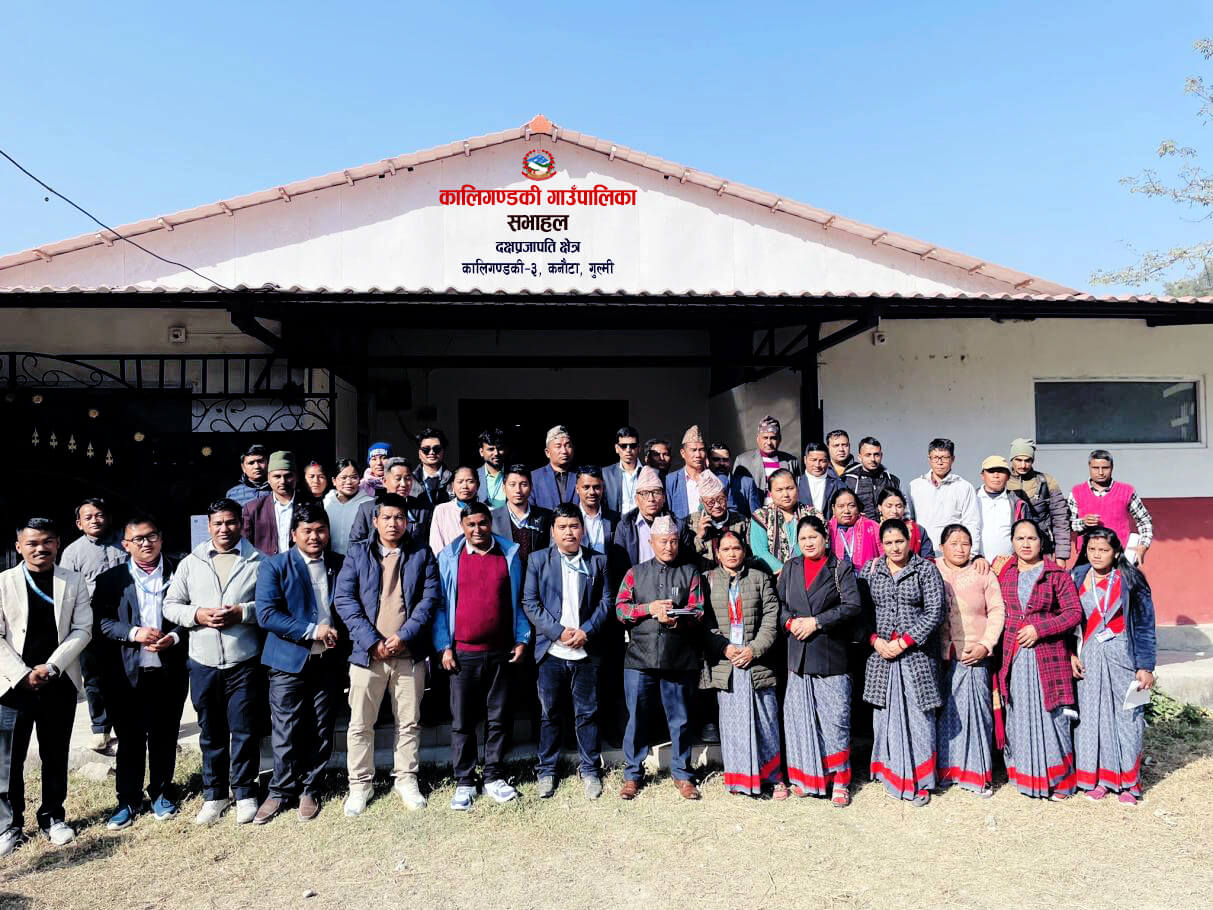
On March 10, 2017, the Government of Nepal restructured the local level bodies, and the previous Harmichaur, Phoksing, Arbani, Jayakhani, Purtighat, Khadgakot, and Bhurmung VDCs were merged to form Kaligandaki Rural Municipality. As a result, Kaligandaki is a melting pot of cultural diversity, and visitors can experience a variety of unique traditions and customs.
Kaligandaki Rural Municipality is a local administrative body situated in Gulmi District, Nepal. The rural municipality was established as part of Nepal's federal structure to implement a more intensive democratic system throughout the country. This rural municipality is named after the Kaligandaki River, which flows through the eastern part of the district and holds great historical and cultural significance for the people.
The Kaligandaki river is unique in that, unlike most other rivers that flow in one direction after their origin, it flows in all directions and eventually reaches the sea level. The water of this holy river is considered to be as pure as zinc, even when kept in water for a long time. The river has played a significant role in the religious and spiritual lives of the people of the region. There are many pilgrimage sites, tapasthals, and sadhanasthals located on the banks of the river, where sages, saints, mahants, kings, maharajas, and sadhaks have performed penance over the centuries.
According to Hindu philosophy, one of the eight Bhuvaikuntha Dhams on earth (Roaming Phulwari) is located in this village on the banks of the Kaligandaki River. In addition, during Satya Yuga, Sati Devi was born in this place, and the region was the site of a great yajna at a place called Kandrauta, where Sati Devi descended from Kailash Mountain without the command of Shiva, and ultimately self-immolated.
The Kaligandaki Rural Municipality comprises the seven VDCs: Harmichour, Arveni, Jaikhani, Purtighat, Phoksing, Khadgkot, and Bhurtunkkha, which are directly affected by the Kaligandaki River. These areas have a rich history and are considered to be of great cultural and spiritual significance. Many sages and saints have achieved Japa, Tapa, Dhyana, Gyan, Upasana, Vipassana, Aradhana, Sadhana, Music, and Yoga by sitting on the banks of the river. It is said that chanting the name of Ram one hundred million times and sitting on the banks of the Kaligand, and chanting the name of Ram just once, destroys all the sins of man.
Overall, the Kaligandaki Rural Municipality is a region steeped in history and culture, with a deep connection to the Kaligandaki River. The rural municipality is a vital component of Nepal's democratic system, and its name reflects the rich heritage and historical significance of the region.
Significance of Kaligandaki Rural Municipality
The Kaligandaki River, situated in the eastern part of Nepal, holds deep spiritual significance. This ancient river flows in all directions after its origin and is home to various civilizations, including the Sri Vaishnava, Shakta, and Shaivite regions. It is the only river in Nepal where Shaligram can be found, and the pure water of the Kaligandaki remains as pure as zinc even when kept for a long time.
The banks of the Kaligandaki river are dotted with pilgrimage sites, tapasthals, and sadhanasthals, where sages, saints, kings, and sadhaks did penance. It is believed that by sitting on the banks of this river, one can achieve Japa, Tapa, Dhyana, Gyan, Upasana, Vipassana, Aradhana, Sadhana, Music, and Yoga. The scriptures also state that regardless of where you do sadhana, visiting Krishna Gandaki at least once is essential for success.
Kaligandaki Rural Municipality is home to several holy places, including Ganeshthan, Muktidham, Gaumatighat, Ghumwan, Purtighat, and Setiveni. Chanting the name of Lord Rama one hundred million times while sitting on the banks of a river destroys all the sins of a man, as per ancient texts. According to Hindu philosophy, this village on the banks of the Kaligandaki River is one of the eight Bhuvaikuntha Dhams on earth.
Satya Yuga saw the birth of Sati Devi in this region. It is said that during a great yajna held at Kandrauta, located between Bandranadi and Kaligandaki, Sati Devi came from Kailash mountain without the command of Shivaji to calm King Dakshaprajapati's mind, who was unhappy about his marriage to Shivaji. When Shivaji found out, he was enraged, and Sati Devi had to self-immolate, leading to the destruction of the yajna.
In 1860 B.S., a man named Agnihotri came from Kathmandu, built a Yajna Kund at the place of Sati Devi's self-immolation, and burned it. The fire he created with Mantra still burns continuously. He also built the Ram Temple of Rudra Devi and stayed in Satyavati for some time.
In conclusion, Kaligandaki Rural Municipality is a place of immense historical and spiritual significance. With its ancient river, holy places, and deep spiritual roots, it is a must-visit destination for those interested in exploring Nepal's rich culture and history.
Inter-Relationship of Kaligandaki Rural Municipality and Its Neighbors
Kaligandaki Rural Municipality, situated in the eastern part of Gulmi District, has a unique interrelationship with its neighboring districts. While it shares a close relationship with Syangja and Bihadi Rural Municipality of Parbat, it has limited interaction with the district headquarters due to geographical challenges.
Economic and Educational Opportunities
People from Kaligandaki Rural Municipality mostly travel to Butwal for economic, educational, employment, and other business opportunities. Additionally, they also travel to Pokhara, Kathmandu, and Palpa for various reasons.
Agricultural Products and Daily Necessities
Agriculture is the primary occupation of the people in this rural municipality. The agricultural products grown in this area are mostly sold in Pokhara, Butwal, Bhairahawa, and Kathmandu for distribution. Other agricultural and daily necessities are sourced from Mulat, Butwal, and Bhairahawa.
Exploring the Natural Heritage of a Rural Municipality
The rural municipality is blessed with an abundance of natural resources, making it an important tourist destination. Here are some of the highlights:
Kaligandaki River: One of the holiest rivers in Nepal, Kaligandaki River flows through the village, providing a breathtaking view and making it an important spiritual destination.
Dense Forests: The municipality is surrounded by dense forests, making it a paradise for nature lovers. The forests are home to a diverse array of flora and fauna, including numerous rare and endangered species.
Waterfalls and Streams: The village is home to numerous creeks, streams, and waterfalls, providing a serene and peaceful atmosphere.
Non-Timber Forest Products: The municipality is rich in non-timber forest products, including Kurilo, Titepati, Vanmara, Amliso, and many others. These products are widely used for medicinal purposes and are also exported.
Agricultural Lands: The rural municipality is predominantly an agricultural area, and the main agricultural lands include Harmichour Phant, Dihing, Vakewa, and many others. The fertile land produces a variety of crops, including maize, potato, millet, wheat, and paddy.
Wildlife: The municipality is home to a diverse range of wild animals, including foxes, deer, tigers, and hares. Birds such as Kalij, Dove, Huchil, Crow, and Parrot can also be spotted in the area.
Natural Resources: The area's natural resources include stone, gravel, sand, and wood, while the food crops produced here are sold to various cities in Nepal.
Unity in Diversity: Cultural Excellence of a Village in Nepal
Located in Nepal, this village has a population of 19,663 and 3,239 households. Men comprise 51% of the population, while women comprise 48.28%. The village boasts a rich cultural diversity, with different castes, languages, and religions living in harmony.
The caste distribution in the village is as follows: Brahmin (820 households), Kshetri (162 households), Magar (1410 households), Gurung (88 households), Newar (44 households), Dalits (552 households), Thakuri (56 households), Muslims (1 household), and others (106 households). Similarly, the village has residents following various religions, including Hinduism (3,019 households), Buddhism (190 households), Christianity (28 households), Islam (1 household), and others (1 household).
Despite the differences, the village has maintained unity in diversity. All castes, languages, and religions are respected equally, and the community lives with mutual respect and harmony.
The village celebrates many festivals and fairs, including Dashai, Tihar, and Maghe Sankranti, among others. These festivals bring people together and help promote the spirit of togetherness and cultural exchange.
The village is also home to the Kaligandaki River, which holds special significance. The river flows in all directions and is the only place in Nepal where Shaligram, a sacred stone, is found. The river's water is pure and has a zinc-like quality, making it a vital source of water for the community.
Geographical Map of Kaligandaki Rural Municipality Gulmi
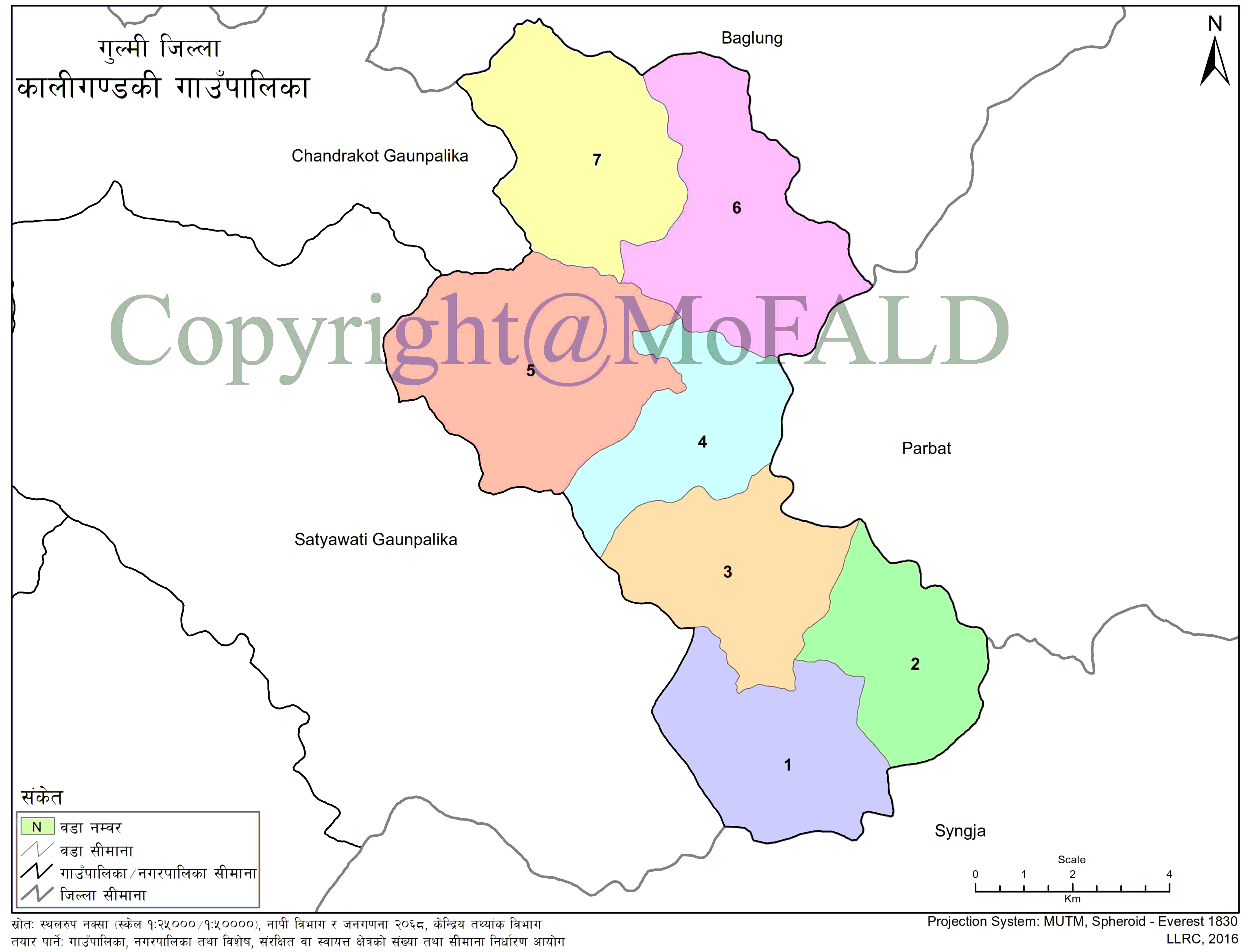
Schools in Kaligandaki Rural Municipality, Gulmi
-
Pre-schools: 42
-
Basic Schools: 44
-
Secondary Schools: 9
-
Plus-2 Level Schools: 6
-
Public Schools: 46
-
Private Schools: 2
-
Religious Schools: 1
-
Total Schools: 49
Private Schools
-
Harmichaur English Boarding School – Nursery to Grade 4, Kaligandaki, Gulmi
-
Kaligandaki Bright Future English Boarding School – Nursery to Grade 8, Kaligandaki, Gulmi
Secondary & Plus-2 Level Schools (NEB Affiliated)
-
Jeevanoddhar Secondary School – Grade 1 to 12, Purtighat
-
Harmichour Secondary School – Grade 1 to 12, Harmichour
-
Durga Bhawan Secondary School – Grade 1 to 12, Bhurtung Chapachaur
-
Janakalyan Secondary School – Grade 1 to 12, Phokshing-6
-
Deurali Secondary School – Grade 1 to 12, Khadgakot
-
Bhagawati Secondary School – Nursery to Grade 12
-
Sukra Secondary School – Nursery to Grade 10
Basic Schools (Nursery to Grade 10 or Lower)
-
Dabhaukhani Secondary School – Nursery to Grade 10
-
Deurali Secondary School – Nursery to Grade 10
-
Nepal Rastriya Dewalpur Basic School – Nursery to Grade 8
-
Praramvik Basic School – Nursery to Grade 8
-
Koreng Basic School – Nursery to Grade 8
-
Tung Tolakot Basic School – Nursery to Grade 8
-
Litung Mangalsthan Basic School – Nursery to Grade 8
-
Himalaya Basic School – Nursery to Grade 8
-
Jayakhani Basic School – Nursery to Grade 8
Other Basic Schools
-
Gyanodaya Basic School – Nursery to Grade 3
-
Jana Shakti Basic School – Nursery to Grade 5
-
Devisthan Basic School – Nursery to Grade 5
-
Janjyoti Basic School – Nursery to Grade 5
-
Janakalyan Basic School – Nursery to Grade 4
-
Urleni Basic School – Nursery to Grade 5
-
Harmichaur Basic School – Nursery to Grade 5
-
Siddha Basic School – Nursery to Grade 5
-
Saraswati Basic School – Nursery to Grade 5
-
Sarada Basic School – Nursery to Grade 3
-
Chaiya Chalise Basic School – Nursery to Grade 3
-
Shiva Basic School – Nursery to Grade 3
-
Tolakot Basic School – Nursery to Grade 3
-
Dipendra Basic School – Nursery to Grade 2
-
Karangtung Basic School – Nursery to Grade 3
-
Jorpati Basic School – Nursery to Grade 3
-
Janapriya Basic School – Nursery to Grade 3
-
Saraswati Basic School – Nursery to Grade 3
-
Bhagawati Basic School – Nursery to Grade 1
-
Nawa Jyoti Basic School – Grade 2 to 3
-
Janata Balkalyan Basic School – Nursery to Grade 3
-
Mulpani Basic School – Nursery to Grade 3
-
Saraswati Basic School – Nursery to Grade 3
-
Bhairabpur Basic School – Nursery to Grade 2
Pre-Primary Centers (ECD/Child Development)
-
Shree Nawajyoti Balbikas Kendra – Nursery
-
Ramfai Child Development Center – Nursery
-
Amrai Child Development Center – Nursery
-
Marim Child Development Center – Nursery
-
Sireni Basic School – Nursery
Religious School
-
Shaligram Bed Bedang Sanskrit School – Grades 1 to 3, Kaligandaki, Gulmi


